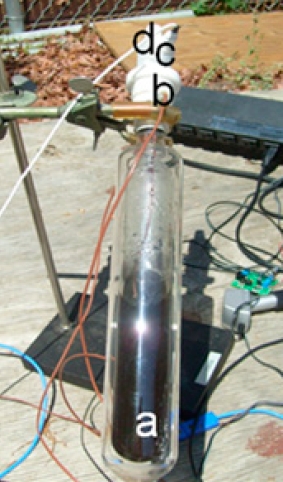A solar-powered medical steriliser for third world countries that uses nanoparticles to produce a scalding jet of bug-killing steam from even icy water has been invented by  scientists in the US.
scientists in the US.
Dubbed "the solar autoclave", the device, which is described in PNAS this week, is the work of Rice University scientist Naomi Halas and her colleagues.
It consists of a flask of water that is placed in sunlight and to which is added a few million tiny gold "nanoshells", each less than 1/5000'th of a millimetre across.
These gold particles, which resemble small dots down a microscope, strongly absorb light, heating up in the process. They pass this heat to the liquid immediately around them, causing it to vapourise and produce a small pocket of steam. This insulates the particle from the liquid, encouraging it, and the steam, to become even hotter.
The bubble of steam expands and carries the now much more buoyant particle to the liquid surface, where the steam escapes at a temperature of 140 degrees centigrade, even if the fluid is kept in an ice bath!
The stream of hot steam can then be tapped off into a sterilising chamber where it condenses, releases even more energy and decontaminates the surfaces of medical instruments or potentially hazardous waste.
Different designs allow for the condensing water either to be recycled, or released. The gold nanoshell particles are stable and remain intact throughout the process.
Tests on samples of a heat-tolerant bacterium called Geobacillus thermophilus, which is routinely used to check the performance of hospital and research autoclaves, showed that the system completely deactivated the bugs within minutes.
The researchers suggest that the instrument, which is very cheap to build and almost free to operate, could enable safe medical sterlisation in resource-poor, remote locations which lack the reliable electrical supplies required to run standard steam-based sterilising devices.
- Previous Nerves control prostate cancer
- Next Cheer up, sleepy genes










Comments
Add a comment